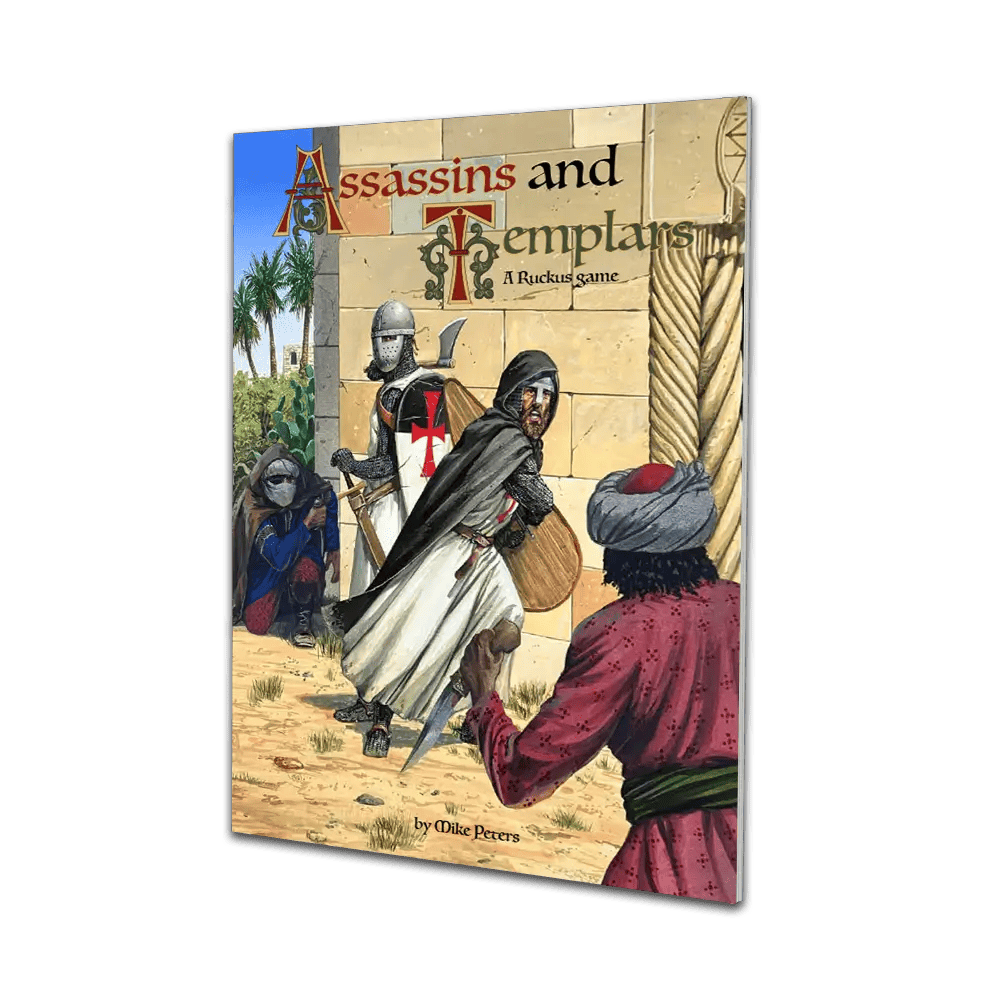Rommel and Monty
£7.50
Two of the greatest generals of the Second World War discuss tactics over a campaign map (or is that a wargames table!) – did it ever happen? Probably not until now…
Born four years apart, Bernard Law Montgomery and Erwin Johannes Eugen Rommel would see their destinies cross two continents in two wars. Yet, while both received their military education on the trench-strewn battlefields of World War I, they took away very different lessons from their experiences. And so it was that when their forces met in Europe and Africa in the Second World War, one was at the forefront of a new form of mobile armoured warfare, and the other at the end of the age of attrition-induced victory.
Rommel fought with distinction during World War I, emerging as a courageous leader with a penchant for creating and then exploiting confusion amongst the enemy and appearing where he was least expected. Montgomery’s service was in the slime and horror of the western front, where he saw first-hand the awesome power of artillery and the ruin it could cause an enemy; he would remember that lesson well.
Both men stayed in the army after the Great War and were in prime positions when war broke out again in 1939. Rommel first made his mark in France in 1940, where, as commander of the 7th Panzer Division his tanks earned the nickname, the Ghost Division, for their habit of turning up in unexpected locations. Rommel led from the front, spurring his tanks forward and deploying shock tactics to push the allies back to Dunkirk. While Rommel advanced, Monty’s 3rd Division retreated. Most of his men got off in the boats in the evacuation of the British Expeditionary Force, however, thanks in no small part to Monty’s aggressive covering tactics. Monty and Rommel’s first meeting in Word War II was a win for the Germans but not a total victory.
Rommel’s reward was the command of the Deutsches Afrikakorps sent to the Libyan desert in 1941. Between February and April 1942, Rommel manufactured a limited attack into an all-out offensive that drove the British hundreds of miles back towards Egypt. In the end, the “Desert Fox”, as Rommel was now called, surrounded the important port town of Tobruk and began an epic siege. All of Libya was soon in Axis hands. The Siege of Tobruk lasted 240 days, but the episode exposed some of Rommel’s shortcomings – his reckless disregard for casualties, the need for manoeuvre for his tanks, and Rommel’s propensity for fighting at the extreme edge of his supply lines. While Tobruk suffered through its death rattle, the British and Germans attacked and counterattacked across the desert, the battle swinging first one way then the other until finally the situation stabilized around a small railway station in the desert named El Alamein. By then, in June 1942, Rommel was a Field Marshal and the British 8th Army had a new commander, Bernard Montgomery.
Monty’s first move was to reorganize his army and place it behind strong defences, and he forbade talk of retreat. Montgomery also appeared everywhere among the men, boosting morale. Then he set a trap on his southern flank and waited: Rommel drove straight into it. The German felt he had little choice but to strike because he knew his strength was diminishing while the British grew in combined land, sea, and air power every day. Rommel attacked which Monty anticipated, but it was no good and he had to withdraw. Monty let Rommel go this time, but the strategic initiative had passed to the British commander and the pursuit would soon begin. Rommel was now involved in rearguard actions and counterattacks with which he bled the British army, but Monty made relentless progress mile by mile into the German lines. The desert war was all over bar the shouting.
Ordering from outside the UK?
We welcome magazine subscriptions and WiPrime membership orders from outside the United Kingdom – please order via our webstore. Digital/PDF products are also available to purchase and download here.
Our other products: Giants in Miniatures, games, physical magazines, and anything else that requires shipping, should be ordered from our distribution partner North Star Military Figures. You will find all Wi products on their website.
Featured and Discounted Products
Browse the most recent releases in the Wi webstore.



















